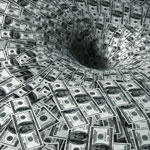
“On the threshold of a crisis,” we observed in our essay “Investing Ahead of the Curve” in the July 19, 2011 edition of The Daily Reckoning, “a fertile imagination can be an investor’s most valuable asset.”
“During normal times,” we continued, “investors can focus only on buying quality stocks one by one from the bottom up, without also trying to envision what tragedies might befall them from the top down… But it may be time to begin imagining the unimaginable.
“It may be time, in other words, to begin considering that the next phase of the global monetary system might not include the US dollar as its reserve currency…or that the next two decades of life in America might not look anything like the last two decades.”
Here in the US of A, life is still pretty good, even if the economy isn’t perfect. A true crisis seems unimaginable. After all, even the 2008 crisis wasn’t that bad. Today, the Apple store in the mall is always packed, most of the restaurants in town are full…and the dollar is still strong enough to buy a nice vacation almost anywhere in the world.
A currency crisis that triggers an economic crisis — or vice versa — just feels like a bunch of wacky doom-and-gloom stuff. And it may well be. In the context of America’s legendary resilience and economic might, a catastrophic currency crisis seems almost unimaginable… But the time has arrived to begin imagining it…not because it is certain, but because it has become less unimaginable.
The best way to defend against a currency crisis is as obvious as it is emotionally difficult: Don’t hold the currency that is hurtling toward a crisis.
There is nothing mechanically difficult about this remedy, but it can be very difficult emotionally…and tactically. An individual who trades dollars for some sort of “safer” currency, for example, risks looking like a fool for a long period of time. Not even gold is a sure bet over short-to-medium-term timeframes. This safe-haven asset tumbled about 40% against the dollar during the 2008 crisis.
In short, being “safe” can sometimes feel very dangerous…and foolish. And no one wants to look as foolish as Noah building his Ark…unless, of course, it starts raining.
When the rain started falling on Brazil in 1990…or Thailand in 1997…or Russia in 1998, investors who had traded their local currencies for US dollars or gold were able to sail through the crises relatively unscathed. As their economies tumbled into deep recessions and asset values collapsed, the folks who had parked their wealth in dollars or gold were able to preserve their wealth…and also to take advantage of the resulting bargains.
To Read More CLICK HERE












